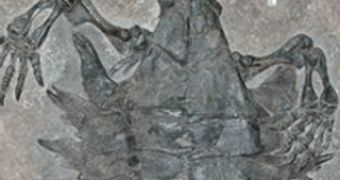A new turtle fossil, unearthed in China, proves that the animal indeed evolved its underside shell before the one on its back, according to the anthropologists who had the opportunity of looking at the find. Estimated at about 220 million-years old, the most primitive turtle ever discovered was most likely a swimmer, and developed this defense mechanism in response to the dangers that loomed, while it was moving in the water.
Researchers concluded that the lower plastron was an extension of the animal's ribs, while its back was only covered by skin, though admittedly thicker than that covering the rest of the body. Having established that, the anthropologists can now safely say that previous theories, which stated that the turtle evolved its carapace from bony plates in the skin, are completely wrong.
"Since the 1800s, there have been many hypotheses about the origin of the turtle shell. Now we have these fossils of the earliest known turtle. They support the theory that the shell would have formed from below as extensions of the backbone and ribs, rather than as bony plates from the skin as others have theorized," said Dr Xiao-Chun Wu, a scientist with the Canadian Museum of Nature.
"The plastron developed first and after it was fully formed, then the carapace developed. What we found is an intermediate missing link," added Li Chun, a researcher at the Chinese Academy of Sciences. "They were aquatic animals but we cannot be certain if they were freshwater or saltwater."
There are also some differences between the fossils and modern-day turtles, including the fact that the remnants had teeth, whereas their predecessors only have a bony plate in their mouths. In addition, the specimens that were uncovered in China also exhibited long Tails, a feature that has long since disappeared from modern turtles.

 14 DAY TRIAL //
14 DAY TRIAL //